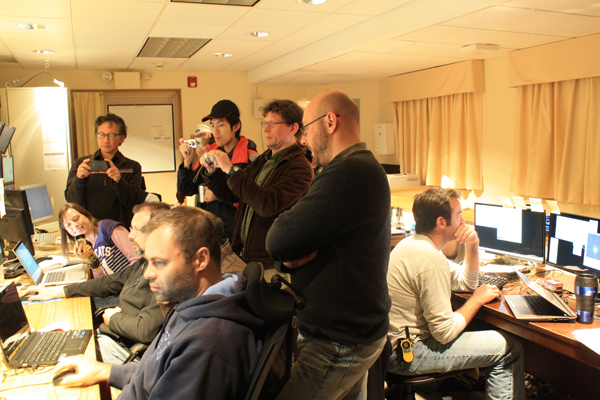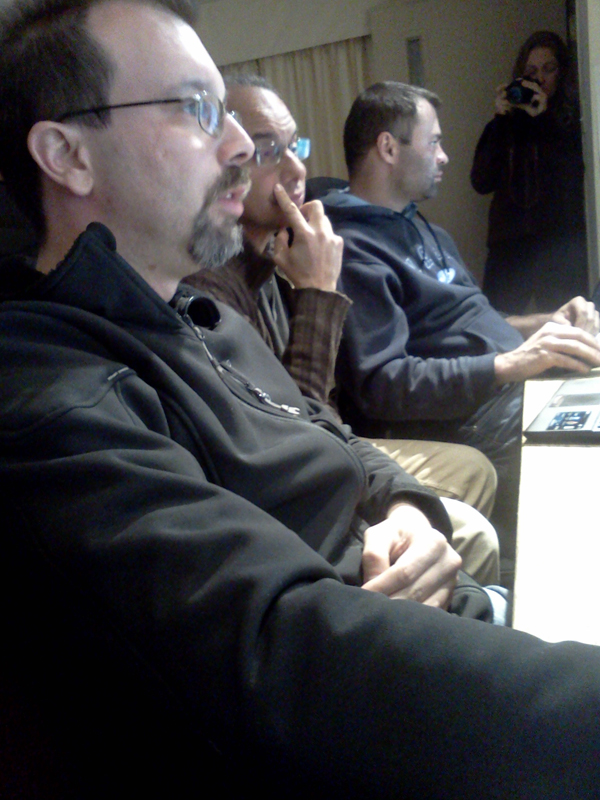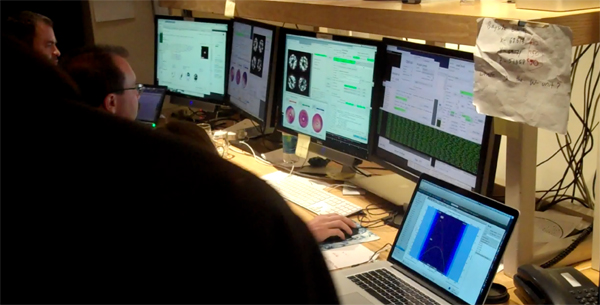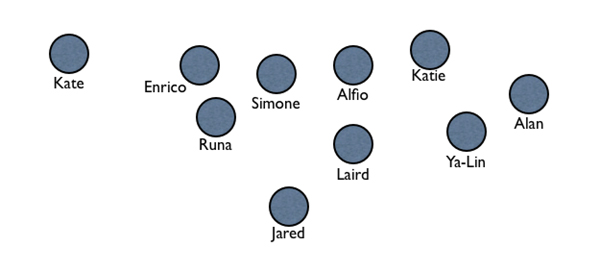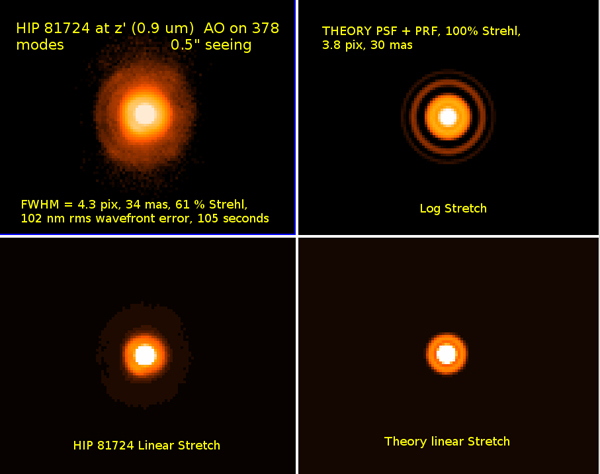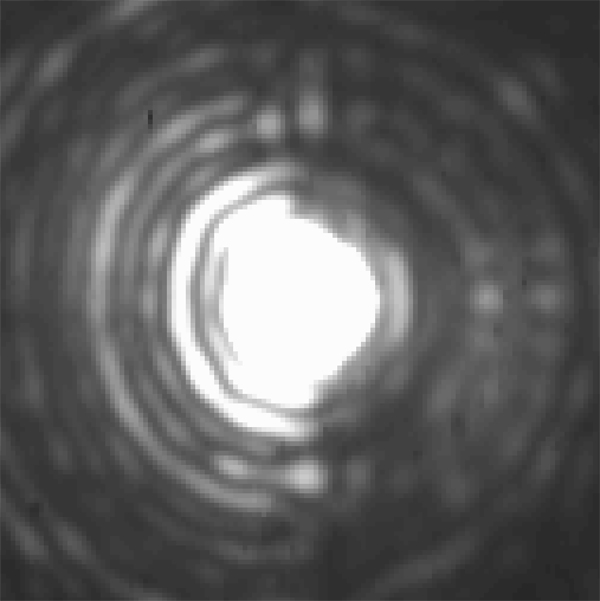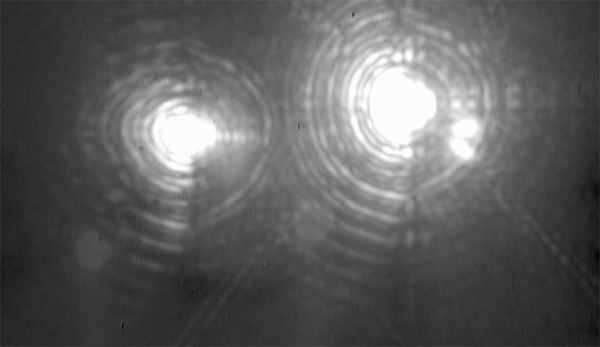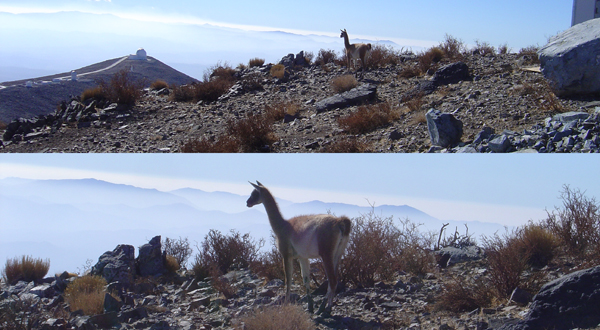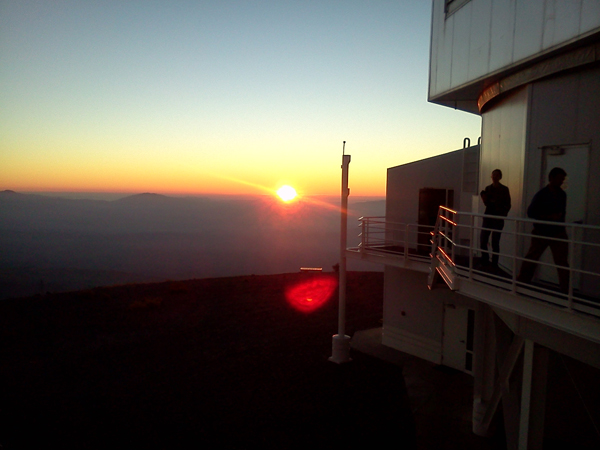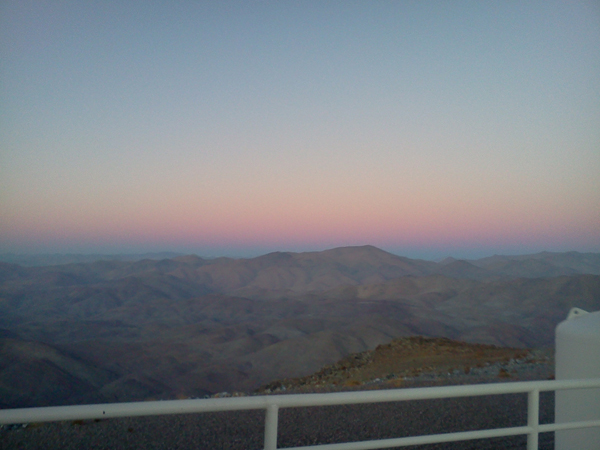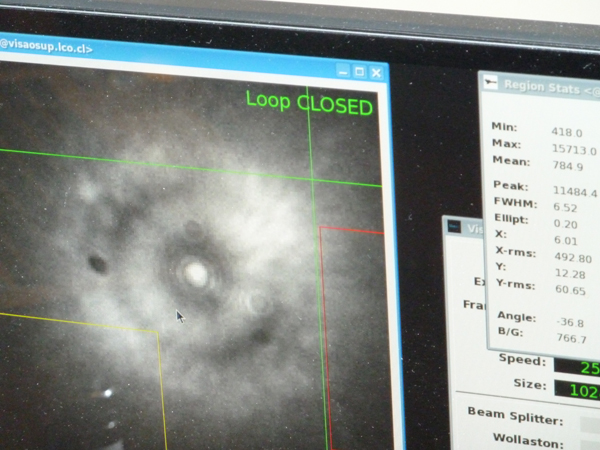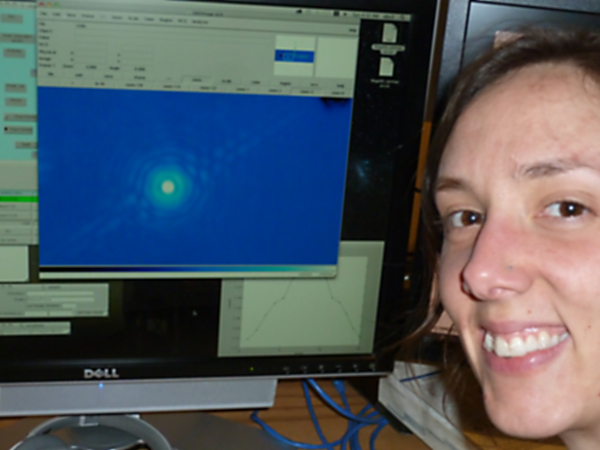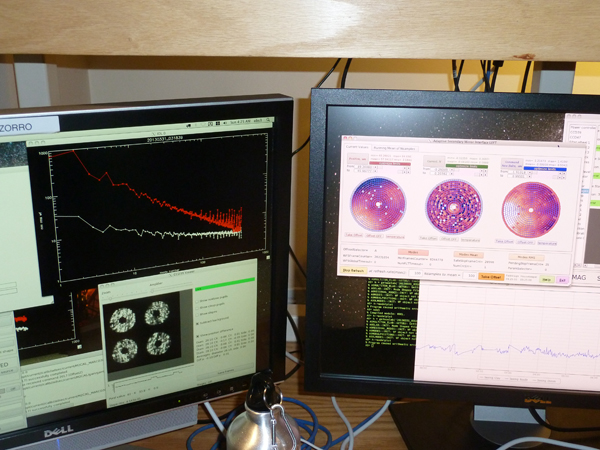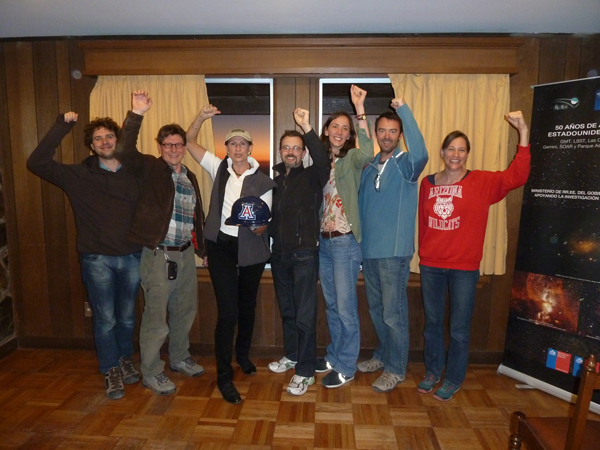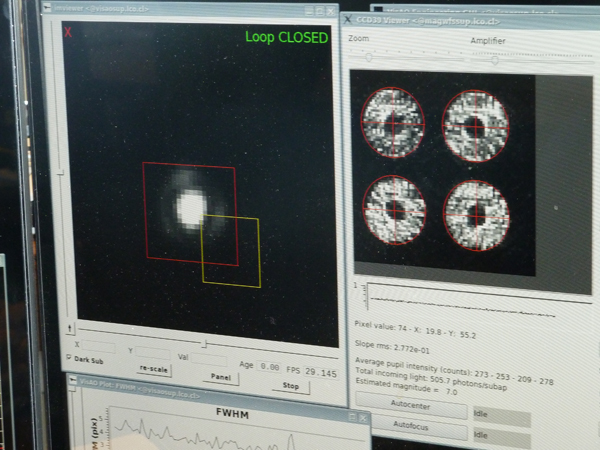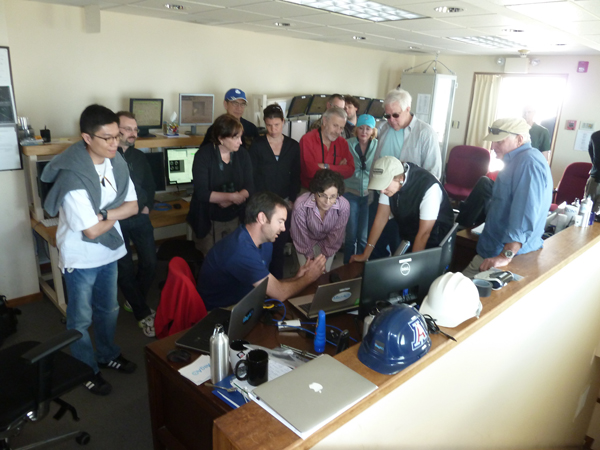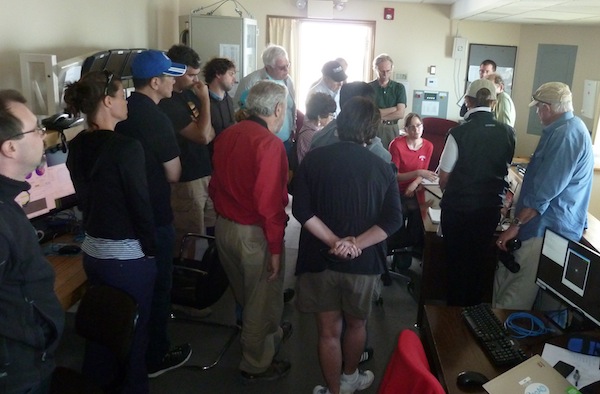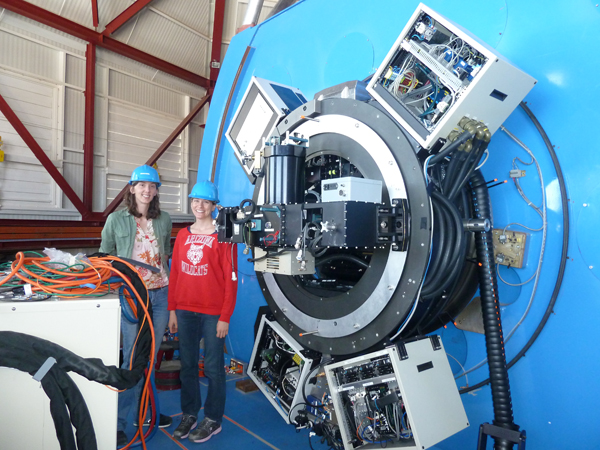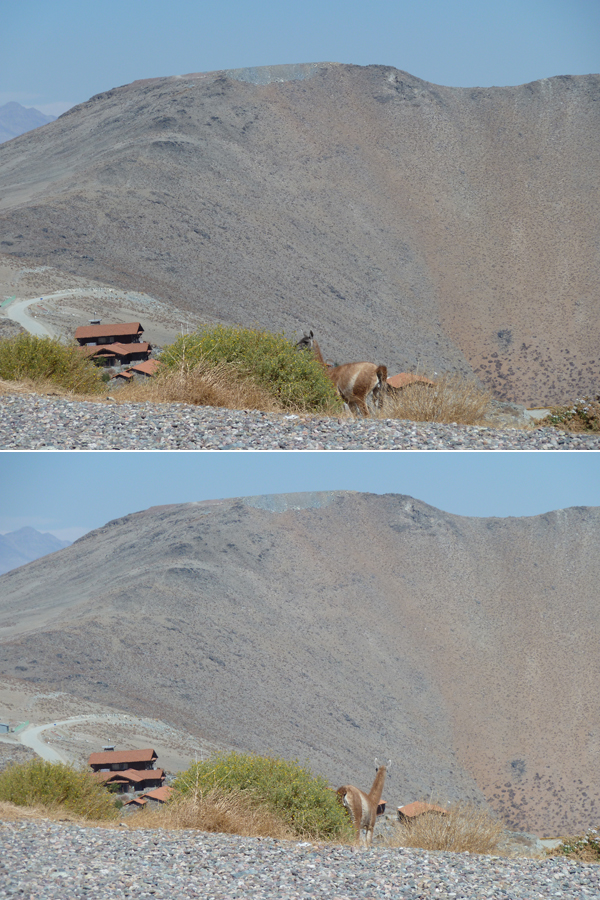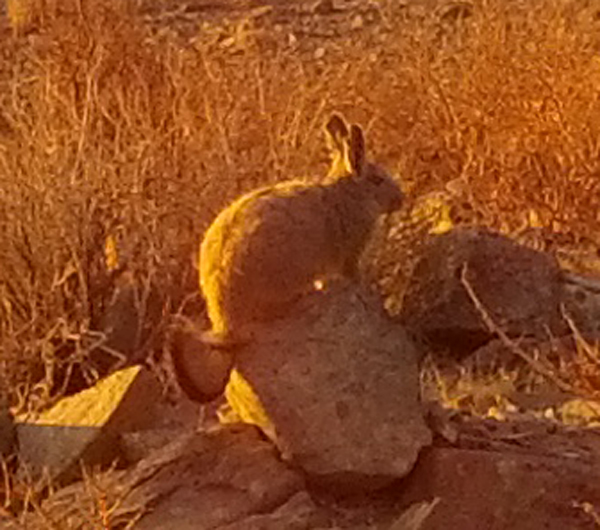Tonight we had great seeing and also fixed a hardware problem, allowing us to practice operating the AO system, VisAO, and Clio under ideal conditions. In fact, Laird ran the AO system, under Alfio’s careful tutelage, and the loop never spontaneously opened the whole night! This is thanks to Runa who replaced the switch BCU earlier in the evening:
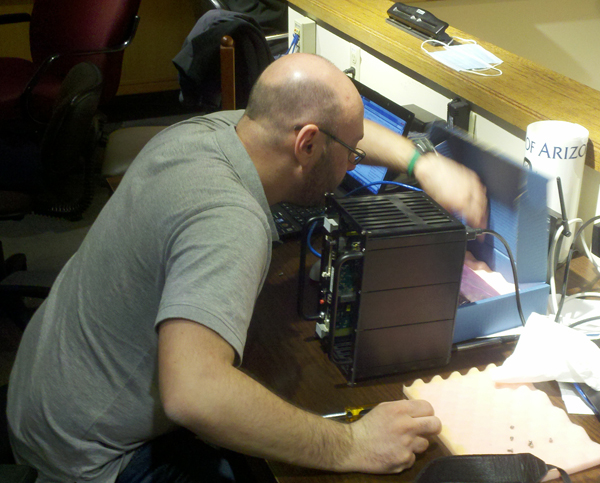
We miss Vanessa, who left yesterday, but now Alycia is here and she is able to help TJ run Clio on their targets, while I was running it with Laird on our targets. This is great and enabled me to get a bit of a break from observing at the beginning of the night, to work on other things. We are still engineering all our various modes — below is a photo of “waffle mode” that creates a cross pattern due to uncorrectable modes — and we are making great progress!
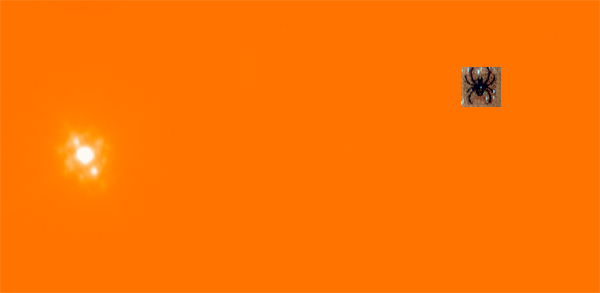
One of the Clio modes we’ve been excited to test, for imaging faint companions, is the APP coronagraph. Here’s a pupil image of the APP with a bright star:
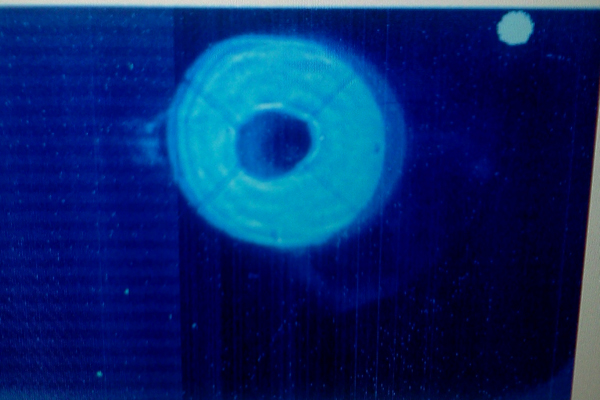
Our shipment of hard drives and hard hats finally arrived.
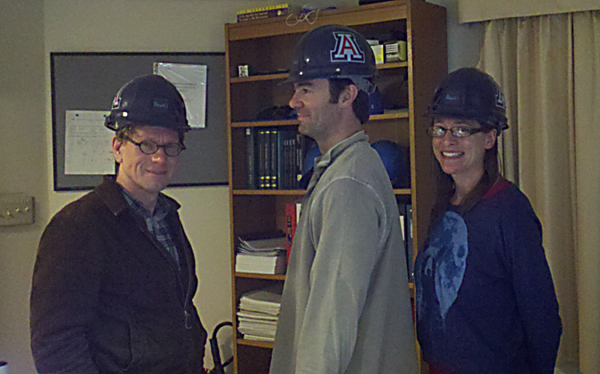
Vanessa had to leave because her skills are also in demand at the LBTI. But here’s one last picture of her and Jared, two graduates of Brookings High School, South Dakota, doing awesome work to bring the sharpest images in the darkest skies. Thanks for all your hard work, Vanessa!
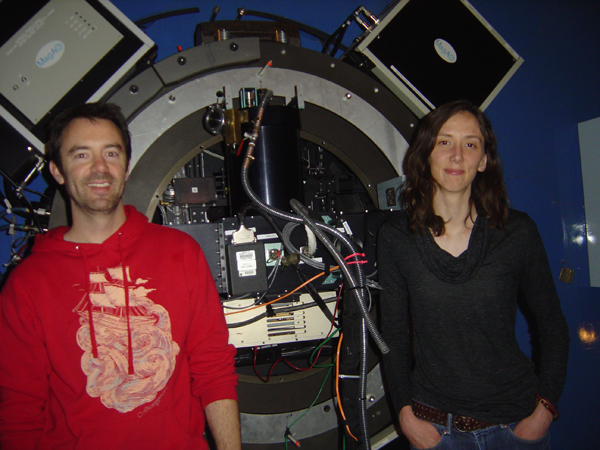
This is good work but exhausting. It’s nice to have something beautiful to see when we step out of the dome in the morning, to head down to a breakfast of fresh-squeezed orange juice and oatmeal and yogurt:
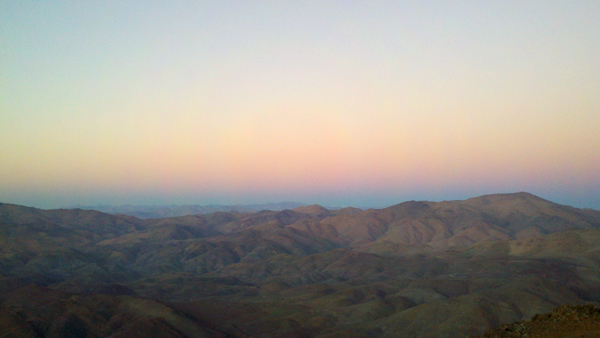
Quotes:
“Call it Laird… dot tickle” (aka .tcl) — Katie to TJ, writing a TCL script to observe Laird’s target.
“Be motivated.” — Runa
“It’s like driving a rover on Mars.” — Alycia, watching TJ align Clio’s pupil, which is a very tricky business.
“It’s like a 6.5-meter space telescope!” –Laird, marveling at how well VisAO is working.
